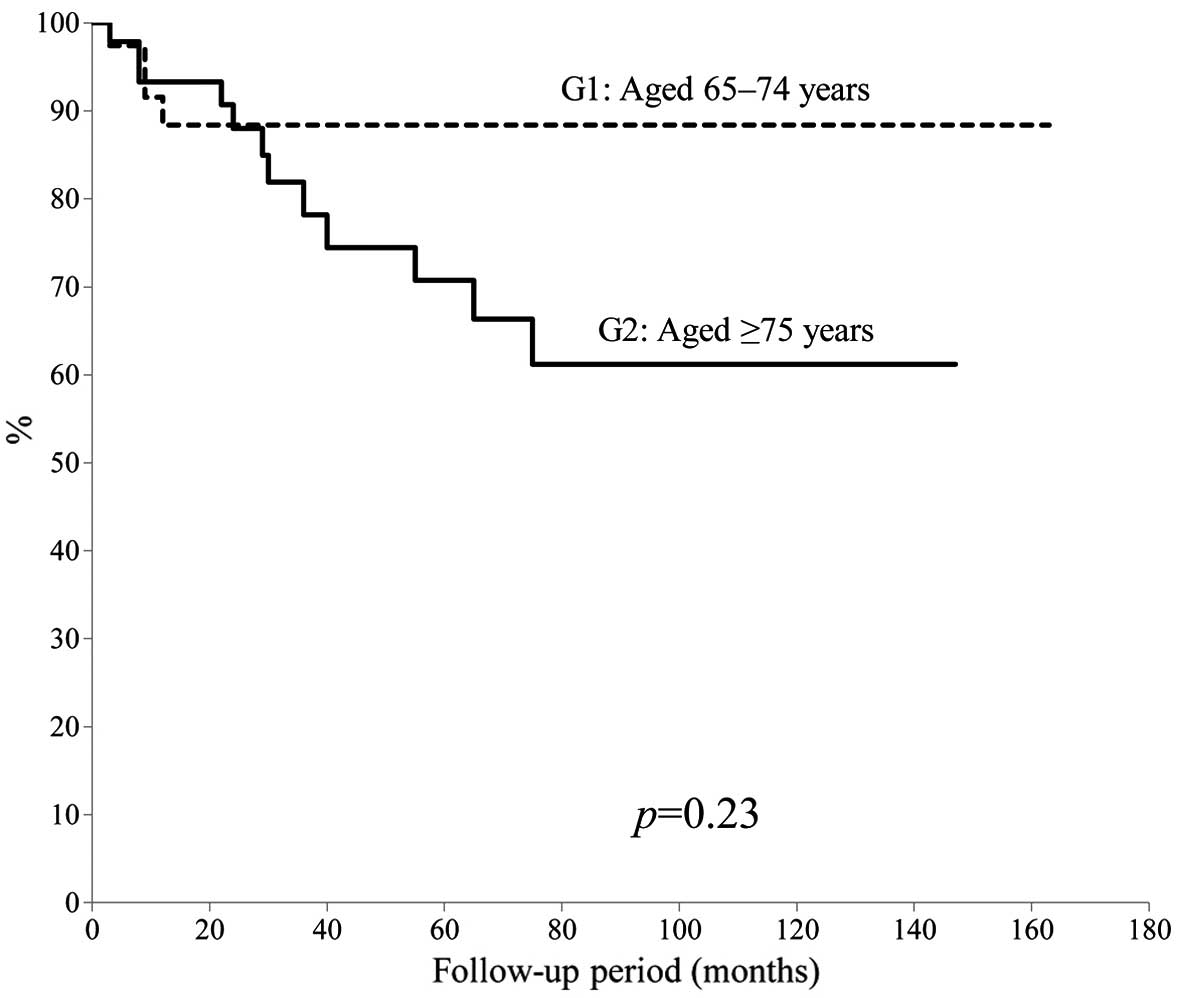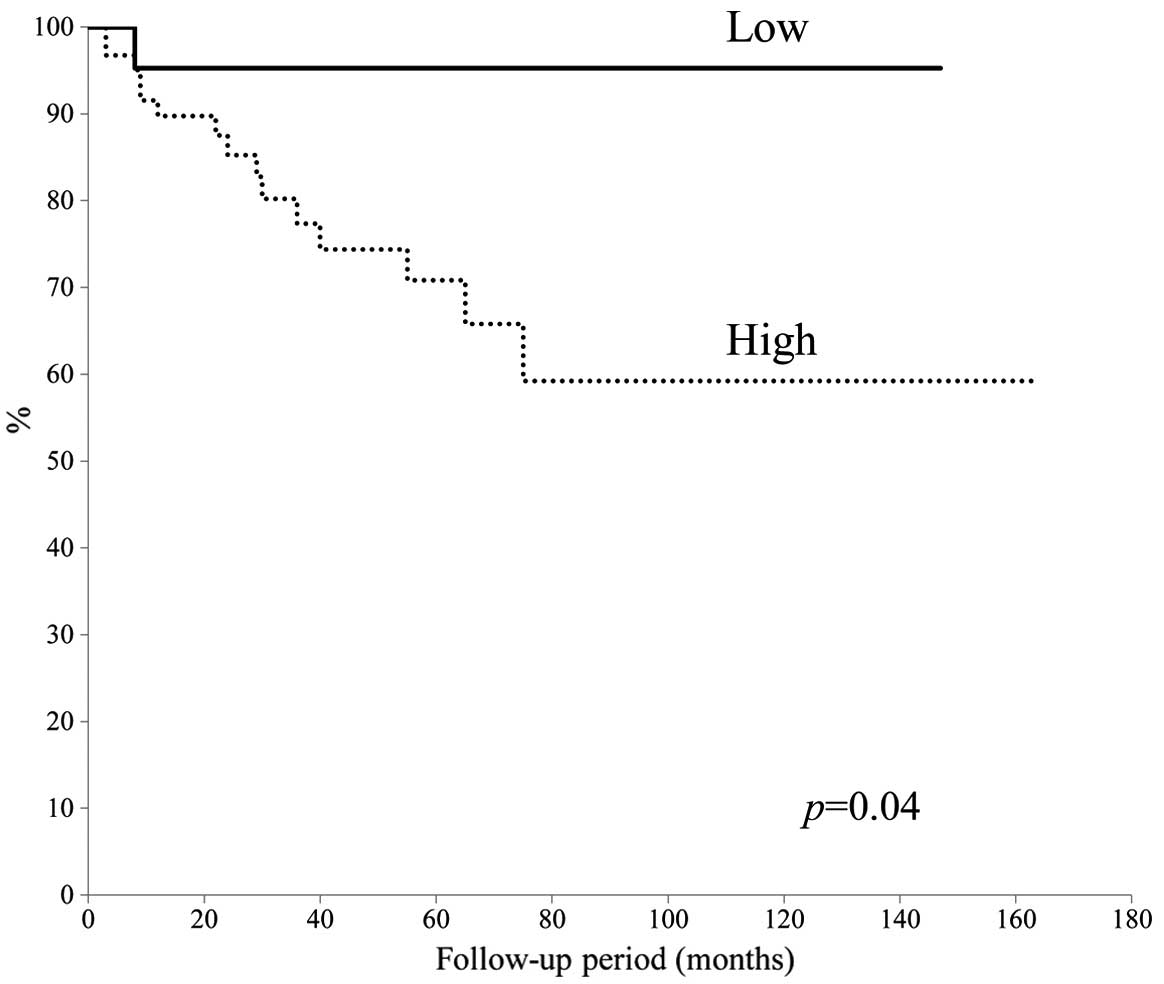|
1
|
Ministry of Health, Labor and Welfare of
Japan, . 2014 Statistics. Elderly people, natality, life
expectancy. http://www.mhlw.go.jp/toukei/saikin/hw/jinkou/geppo/nengai14/index.htmlAccessed.
30–April. 2014
|
|
2
|
World Health Organization, . Health
statistics and information systems definition of an older or
elderly person. http://www.who.int/healthinfo/en/Accessed.
30–April. 2014
|
|
3
|
Office for Policies on Cohesive Society, .
Cabinet Office, Government of Japan. http://www8.cao.go.jp/souki/index-eng.htmlAccessed.
30–April. 2014
|
|
4
|
Japanese Orthopedic Association
Musculoskeletal Tumor Committee, . Bone Tumor Registry and
Malignant Soft Tissue Tumor Registry in JapanJapanese
Musculoskeletal Oncology Group; Tokyo: 2008
|
|
5
|
Anisimov VN: The relationship between
aging and carcinogenesis: A critical appraisal. Crit Rev Oncol
Hematol. 45:277–304. 2003. View Article : Google Scholar : PubMed/NCBI
|
|
6
|
Balducci L and Erchler WB: Cancer and
aging: A nexus at several levels. Nat Rev Cancer. 5:655–662. 2005.
View Article : Google Scholar : PubMed/NCBI
|
|
7
|
Al-Refaie WB, Habermann EB, Dudeja V,
Vickers SM, Tuttle TM, Jensen EH and Virnig BA: Extremity soft
tissue sarcoma care in the elderly: Insights into the
generalizability of NCI Cancer Trials. Ann Surg Oncol.
17:1732–1738. 2010. View Article : Google Scholar : PubMed/NCBI
|
|
8
|
Osaka S, Sugita H, Osaka E, Yoshida Y and
Ryu J: Surgical management of malignant soft tissue tumours in
patients aged 65 years or older. J Orthop Surg (Hong Kong).
11:28–33. 2003.PubMed/NCBI
|
|
9
|
Lahat G, Dhuka AR, Lahat S, Lazar AJ,
Lewis VO, Lin PP, Feig B, Cormier JN, Hunt KK, Pisters PW, et al:
Complete soft tissue sarcoma resection is a viable treatment option
for select elderly patients. Ann Surg Oncol. 16:2579–2586. 2009.
View Article : Google Scholar : PubMed/NCBI
|
|
10
|
Boden RA, Clark MA, Neuhaus SJ, A'hern JR,
Thomas JM and Hayes AJ: Surgical management of soft tissue sarcoma
in patients over 80 years. Eur J Surg Oncol. 32:1154–1158. 2006.
View Article : Google Scholar : PubMed/NCBI
|
|
11
|
Torigoe T, Terakado A, Suehara Y, Kurosawa
H, Yazawa Y and Takagi T: Bone versus soft-tissue sarcomas in the
elderly. J Orthop Surg. 18:58–62. 2010.
|
|
12
|
Kozawa E, Sugiura H, Tsukushi S, et al:
Multiple primary malignancies in elderly patients with high-grade
soft tissue sarcoma. Int J Clin Oncol. 19:384–390. 2014. View Article : Google Scholar : PubMed/NCBI
|
|
13
|
Yoneda Y, Kunisada T, Naka N, Nishida Y,
Kawai A, Morii T, Takeda K, Hasei J, Yamakawa Y and Ozaki TJapanese
Musculoskeletal Oncology Group: Favorable outcome after complete
resection in elderly soft tissue sarcoma patients: Japanese
Musculoskeletal Oncology Group study. Eur J Surg Oncol. 40:49–54.
2014. View Article : Google Scholar : PubMed/NCBI
|
|
14
|
Flecher C, Unni K and Mertens F: Pathology
and genetics of tumours of soft tissue and boneWorld Health
Organization Classification of Tumours. Kleihues P and Sobin LH:
International Agency for Research on Cancer Press; Lyon: pp. 10–18.
2002
|
|
15
|
Broders AC: Squamous cell epithelioma of
the lip. A study of 537 cases. JAMA. 74:656–664. 1920. View Article : Google Scholar
|
|
16
|
Trojani M, Contesso G, Coindre JM, Rouesse
J, Bui NB, de Mascarel A, Goussot JF, David M, Bonichon F and
Lagarde C: Soft-tissue sarcomas of adults; study of pathological
prognostic variables and definition of a histopathological grading
system. Int J Cancer. 33:37–42. 1984. View Article : Google Scholar : PubMed/NCBI
|
|
17
|
Edge SB, Byrd DR, Compton CC, et al:
American Joint Committee on Cancer (AJCC): Soft tissue sarcomaAJCC
cancer staging manual. 7th. Springer; New York, NY: pp. 291–296.
2010
|
|
18
|
Edge SB, Byrd DR, Compton CC, et al: AJCC
boneAJCC cancer staging manual. 7th. Springer; New York, NY: pp.
281–290. 2010
|
|
19
|
Hosking MP, Warner MA, Lobdell CM, Offord
KP and Melton LJ III: Outcomes of surgery in patients 90 years of
age and older. JAMA. 261:1909–1915. 1989. View Article : Google Scholar : PubMed/NCBI
|
|
20
|
Kawaguchi N, Ahmed AR, Matsumoto S, Manabe
J and Matsushita Y: The concept of curative margin in surgery for
bone and soft tissue sarcoma. Clin Orthop Relat Res. 419:165–172.
2004. View Article : Google Scholar : PubMed/NCBI
|
|
21
|
Kaplan EL and Meier P: Nonparametric
estimation from incomplete observation. J Am Stat Assoc.
53:448–457. 1958. View Article : Google Scholar
|
|
22
|
Mantel N: Evaluation of survival data and
two new rank order statistics arising in its consideration. Cancer
Chemother Rep. 50:163–170. 1966.PubMed/NCBI
|
|
23
|
Cox DR: Regression models and life-tables.
J R Stat Soc. 34:187–220. 1972.
|
|
24
|
Takano S, Watanabe Y, Ohishi H, Kono S,
Nakamura M, Kubota N and Iwai S: Multimodality treatment for
patients with hepatocellular carcinoma: A single institution
retrospective series. Eur J Surg Oncol. 26:67–72. 2000. View Article : Google Scholar : PubMed/NCBI
|
|
25
|
Suemitsu R, Yamaguchi M, Takeo S, Ondo K,
Ueda H, Yoshino I and Maehara Y: Favorable surgical results for
patients with nonsmall cell lung cancer over 80 years old: A
multicenter survey. Ann Thorac Cardiovasc Surg. 14:154–160.
2008.PubMed/NCBI
|
|
26
|
ESMO/European Sarcoma, Network Working
Group, . Soft tissue, visceral sarcomas: ESMO clinical practice
guidelines for diagnosis, treatment and follow-up. Ann Oncol. 23
(Suppl 7):vii92–vii99. 2012.PubMed/NCBI
|
|
27
|
Linch M, Miah AB, Thway K, Judson IR and
Benson C: Systemic treatment of soft-tissue sarcoma-gold standard
and novel therapies. Nat Rev Clin Oncol. 11:187–202. 2014.
View Article : Google Scholar : PubMed/NCBI
|
|
28
|
Farry JK, Flombaum CD and Latcha S: Long
term renal toxicity of ifosfamide in adult patients - 5 year data.
Eur J Cancer. 48:1326–1331. 2012. View Article : Google Scholar : PubMed/NCBI
|
|
29
|
Matushansky I, Dela Cruz F, Insel BJ,
Hershman DL and Neugut AI: Chemotherapy use in elderly patients
with soft tissue sarcoma: A population-based study. Cancer Invest.
31:83–91. 2013. View Article : Google Scholar : PubMed/NCBI
|
|
30
|
Vigorito C and Giallauria F: Effects of
exercise on cardiovascular performance in the elderly. Front
Physiol. 5:512014. View Article : Google Scholar : PubMed/NCBI
|














